In our last post, we covered the most basic yoga poses – child’s, downward dog, bridge, and tree. In this post, we’ll take a look at more basic yoga poses.
These poses are, for the most part, a little more challenging and nuanced. Even so, they’re still considered basic poses – partially because they are foundational.
They are the warrior series (1, 2, and 3), pigeon, and corpse pose. So throw on something comfortable, grab your mat, and we’ll begin.
Warrior 1 (Virabadrasana I)
The warrior series begins with warrior 1. Strangely enough, warrior 1 is not the easiest of the warrior series. But it does help you to understand how to place your feet firmly and get grounded.
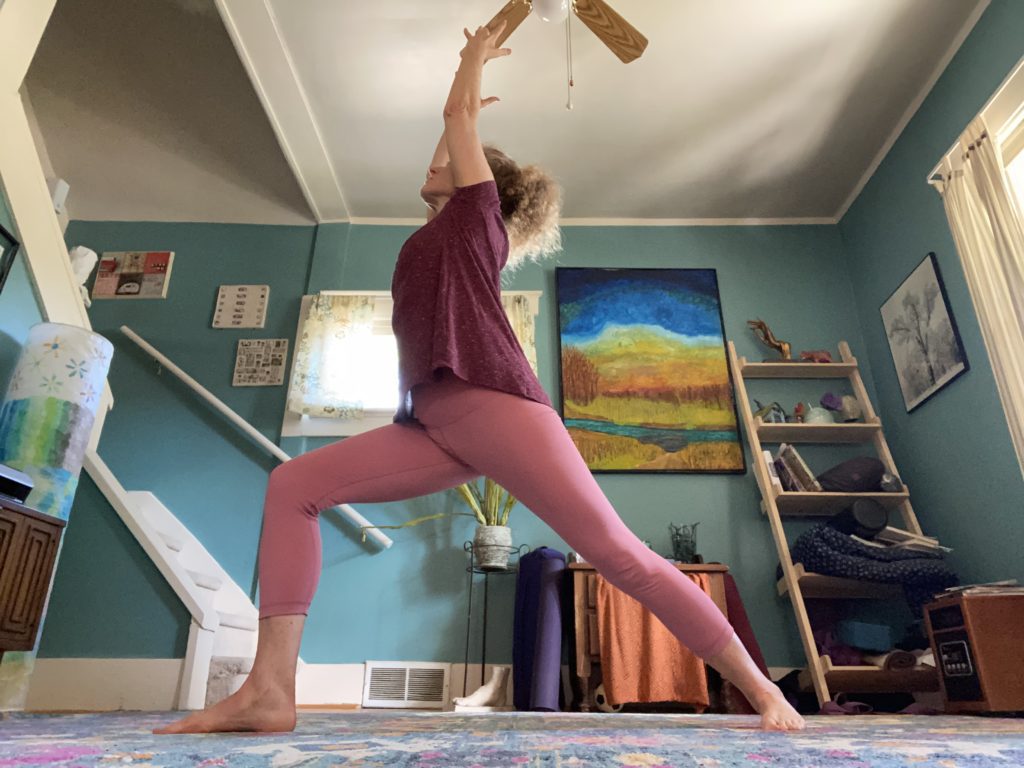
Warrior 1 is most frequently entered from downward-facing dog. To understand the foot placement, the best way to come into it is to turn the back foot at about a 45-degree angle and step the front foot forward – toes point straight ahead. (You can start on the left or right side.)
To keep the hips squared forward, feet should be placed as though on train tracks rather than a tightrope. The front knee bends into a lunge and the arms rise. Be sure to keep the shoulders drawing down and away from the ears. (See picture.)
The outside edge of the back foot should remain pressing into the mat and not rolling off of it. Continue to sink into the front knee and gaze at the ceiling.
Warrior 2 (Virabadrasana 2)
While warrior 2 can also be entered from downward-facing dog, it’s nice to come into it from warrior 1. That’s because the front knee is already bent and the foot is already in place.
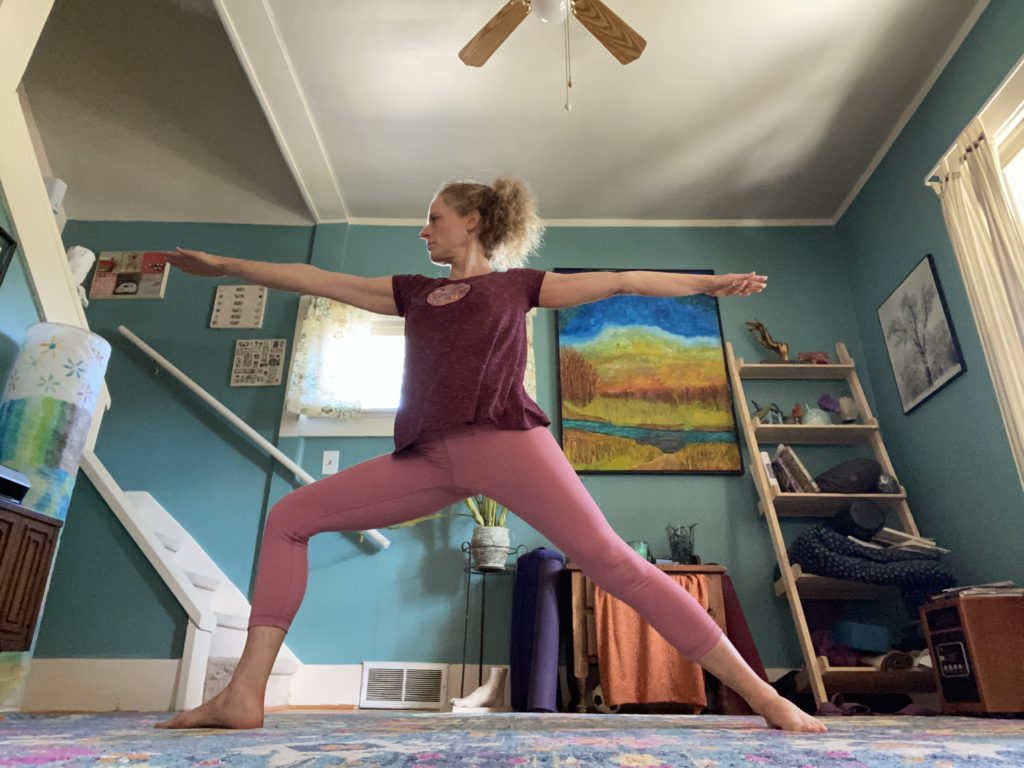
The back foot in warrior 2 pivots parallel to the mat’s short back edge. In most cases, this requires a wider stance. Now the hips are squared to the long edge of the mat.
Arms move into a T-formation and the lunge becomes deeper. Upon gazing down at the front knee, the big toe and second toe should be visible so the knee is not tracking inward. The knee should also be directly over the ankle and not in front of it.
Turn the head to send the gaze over the front arm.
Warrior 3 (Virabadrasana 3)
For most, warrior 3 is the most complicated because it involves balance. When first learning it, warrior 3 is most easily entered from a standing position.
With both feet grounded and facing straight forward, palms to the heart, find a steady and stabilizing breath. Put the weight on the chosen foot and begin to lift the other leg behind slowly.
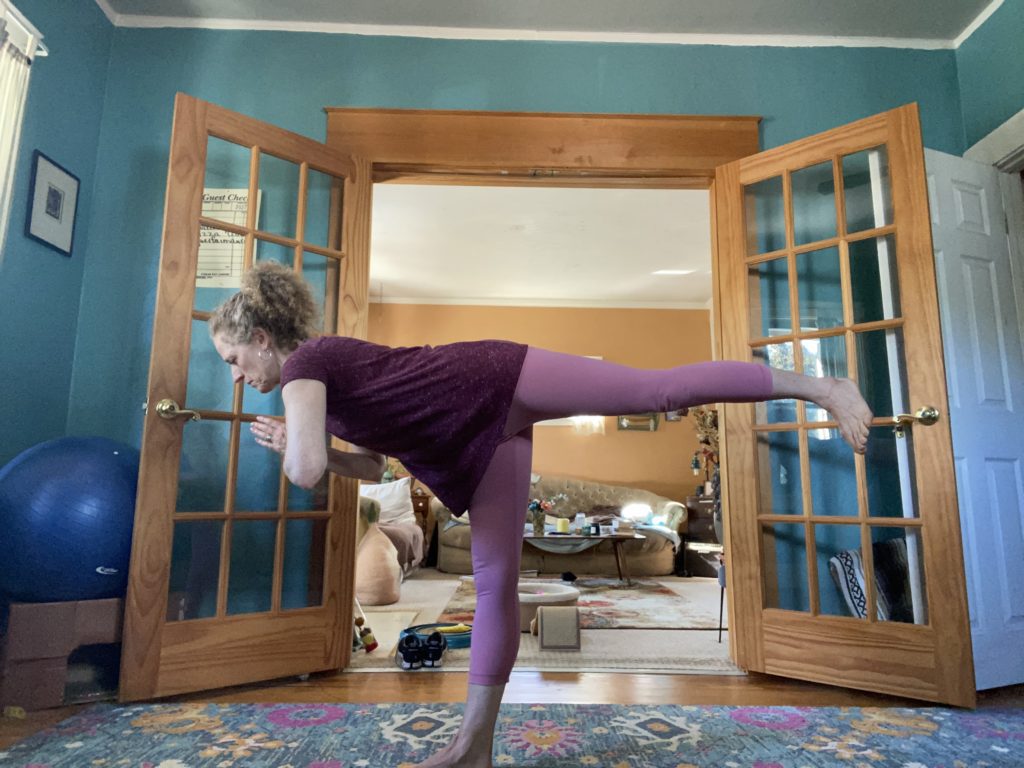
In warrior 3, think of the spine as an extension of the leg. In other words, the body tips down no lower than the leg lifts. As flexibility increases, the pose will eventually look like a capital letter T. (See picture.)
Hips should stay squared down to the mat and the lifted leg rotated downward, foot flexed, and toes pointing to the earth. Hands can stay in prayer, or arms can stretch back along the body or extend forward in line with the ears.
Pigeon (Kapotasana)
Pigeon is the ultimate hip opener. Some variation of it shows up in the majority of practices.
Starting on hands and knees (in table pose), lift and extend one leg, bend the knee, and send the knee forward. Place the bent leg on the ground under the chest and, rotating from the hip, open the knee out to the side and foot closer to the opposite wrist. (See picture.) The back leg goes straight.
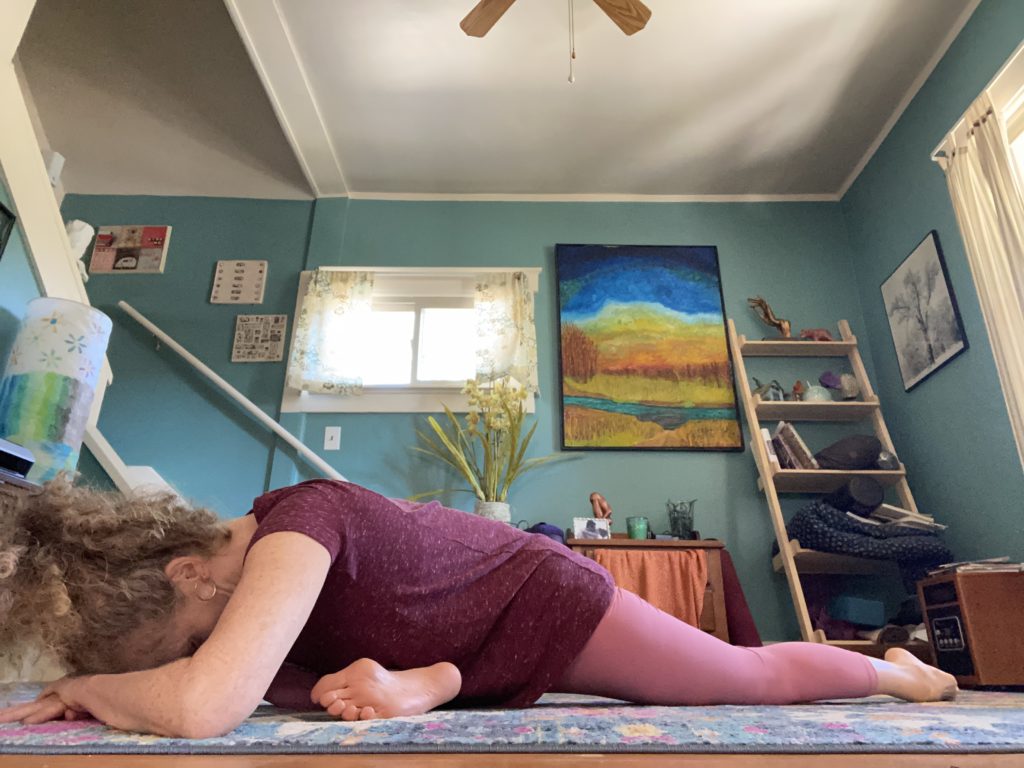
The front knee and foot will remain closer to the midline if the hips are tight, and the front shin will be more parallel with the front of the mat if the hips are open. The hips should be square to the front of the mat, so if one hip is on the floor, then so too should be the other.
Props are really helpful in pigeon. Sliding a blanket under the hip that’s deeply stretching can soften the intensity and allow for deeper breathing.
Corpse (Savasana)
This is arguably one of the most important poses in yoga. While it looks easy, for many people new to yoga it can be extremely challenging. And it’s the last pose for the vast majority of practices.
Corpse pose is just as it sounds. It’s laying flat on the mat and closing the eyes. Shoulders are slightly tucked so the palms turn upward (but fingers relaxed) in a state of being receptive. (See picture.)
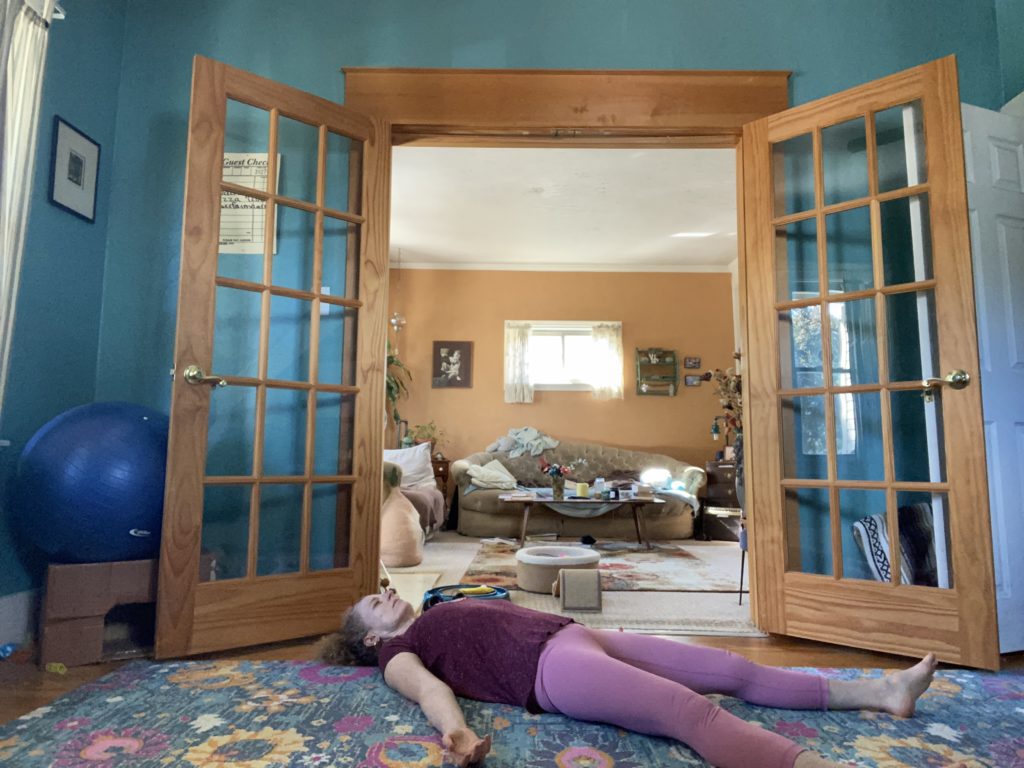
The name isn’t meant to be morbid. It merely symbolizes the death of the physical practice.
What makes it so challenging is the commitment to go from a human doing to an actual human “being.” It’s much harder than it sounds. Especially for those who don’t have a regular meditation practice. But as with all poses, it becomes easier over time and with practice.
Ready to Explore Basic Yoga Poses?
If you’re curious about exploring the benefits of these basic yoga poses, contact us today.
We provide yoga, meditation, life coaching, and other mindfulness practices to businesses, schools, and organizations. We offer both in-person and virtual sessions.
See what a difference these practices can make for you.



